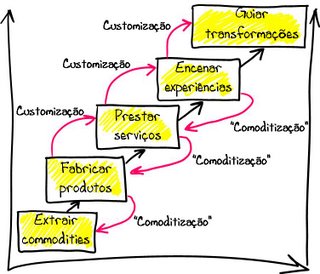"VCM [value chain marketing] is the marketing strategy that describes the practice of influencing the entire value chain to succeed in marketing innovations. This strategy requires a firm to have a deep understanding of the value chain in order to maximize its marketing performance. Adopting VCM implies at first that firms must cover a broader framework to map the value chain. They have to analyze and properly understand the players and their relationships at each level. This also includes identifying industry developments and drivers as well as government regulations.
...
firms intending to practice VCM should adapt and tailor their marketing mix. This includes the type of product, how it is promoted to customers, the method for distributing it to customers, and the amount the customers are willing to pay for it.
...
Customer intimacy is not only essential to understand the value chain and its processes but also to reduce the distance to downstream players. Therefore, a supplier no longer has to be separated from the stage of his downstream customers through his given position in the value chain. In fact, the value chain converts more and more into a value network and the distinction between immediate and down- stream customers becomes less clear cut. By acquiring knowledge in the surrounding fields, suppliers are able to increase the overlap between their knowledge base and that of the downstream actors. They learn about applicators and develop communication strategies to reach them and to persuade them. This enhances interpersonal interaction and the applicators’ feeling about the suppliers’ competence to discuss on innovative topics."
"VCM reduces the risk of substitutability of suppliers’ materials or product inputs by demonstrating their importance for the end product. This means that suppliers no longer operate anonymously and address customers down the value chain directly. They create problem awareness among downstream customers by presenting the distinguishing features of their innovative products. As VCM allows a two-way communication, it increases the efficiency of the entire marketing mix. It implies that suppliers receive unfiltered feedback from downstream cus- tomers and the chance to better solve their problems in real time. As a result, suppliers gather valuable market information and translate this information into product improvements or innovations. If suppliers succeed in positioning and differentiating their products in a favorable way, substitutability becomes less likely. By creating preferences at the stage of downstream customers, VCM assures suppliers’ sales-political independence in the vertical production and distribution process. VCM allows suppliers to strengthen their position in a value chain and motivate downstream customers to invest in long-term partnerships. In consequence, suppliers are able to enhance control over different value-chain activities and anticipate fluctuations in demand more readily."
Trechos retirados de "Value Chain Marketing - A Marketing Strategy to Overcome Immediate Customer Innovation Resistance" de Stephanie Hintze.





























